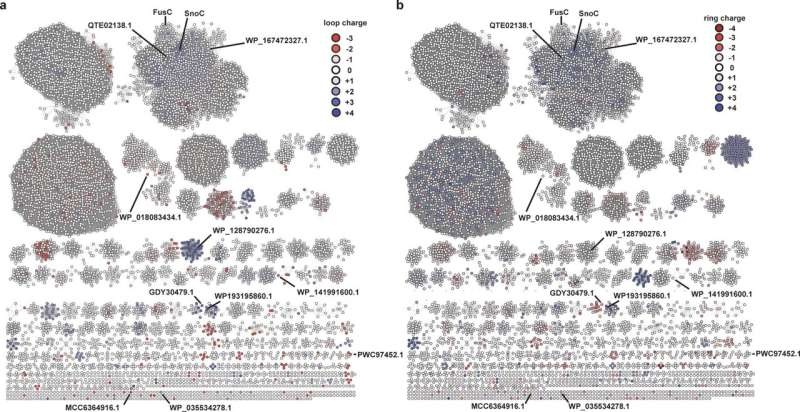Learn how scientists are implementing state-of-the-art AI techniques in their work on the complex lasso peptides, an exciting group of natural compounds with significant therapeutic properties. Discover the exciting quest to unravel these novel molecular structures and how such results could provide a template for the discovery of new lasso-peptide based drugs.

Unraveling the Lasso Knot
Lasso peptides constitute a fascinating class of bacterial natural products. They possess a remarkably stable and robust molecular configuration shaped like a slip knot which makes them unique in chemical kind.
For more than three decades, scientists have been studying how these peptides are made, and in particular the process by which they are folded into their unique lasso structure. This process is controlled by the related enzymes peptidase and cyclase.
Significant effort has gone into studying these enzymes because they are difficult to purify and inactivate. However, one exception to this is the FusC fusilassin cyclase that has presented itself as a unique aspect for researchers in terms of studying how lasso knots are tied.
Using the computer power of artificial intelligence (AI), the researchers have unlocked the secret of lasso peptide creation in a world first study. They applied the AlphaFold program to predict the structure of FusC and learned which amino acids in this enzyme’s active site are essential for lasso peptide substrate binding.
The blog also includes new capabilities such as AI-powered insights and zero-click engineered Lasso Peptides.
But the scientists didn’t just leave it at that. In addition, they used other AI-driven methods like RODEO to identify the active site residues responsible for knotting the lasso tail. They also used molecular dynamics simulations facilitated by the Folding@home distributed computing platform to see how the cyclase enzyme grasps the lasso peptide on an atomic scale.
From the computational work they conducted, the team found that the backwall region of the cyclase active site — more particularly in helix 11 — is important for guiding lasso peptides to fold. To test this model, the researchers carried out cell-free biosynthesis experiments in which they combined all the components of a cell required for lasso peptide production with engineered enzyme variants in helix 11 that contained various amino acid substitutions.
In addition, their results validated the computational model, since they were also able to optimize an engineered version of the FusC cyclase for folding lasso peptides that were inaccessible to the wild-type enzyme. The success of these combinations shows the promise of existing methods and algorithms, combined with targeted experimental validation techniques employed by the researchers.
It demonstrated the translatability of their findings with live applications in conjunction with Lassogen, a biotech company that they collaborated with. For instance, they adapted a different cyclase, McjC to synthesize a highly efficacious inhibitor of the cancer-associated integrin by using lasso peptides in addition to demonstrating that lasso peptides could be therapeutically useful.
Conclusion
These results are a big step toward solving the synthesis and folding of lasso peptides. Using AI and state-of-the-art computational tools, the researchers learned to unlock the biophysical rules that direct the assembly of these distinct molecular forms.
These results provide a foundation for engineering lasso cyclases strategically to broaden the portfolio of these unique chemicals and unveil their vast medicinal potential. By understanding the basic rules behind linear to hyper-cyclic conversion, our work should enable synthesis of an even wider range of lasso peptides that are crucial for obtaining drug candidates and taking lasso peptide-based therapeutics further into the clinic.
The new findings demonstrate the transformative potential of integrating AI, computational biology and experimental strategies in systems biology researches, thanks to an interdisciplinary collaboration between different labs at the Carl R. Woese Institute for Computational Biology (UI-UCB), in Urbana-Champaign. The discoveries made in this study might reshape the lasso peptide landscape and inspire the identification of novel drug candidates driven by evolution.
